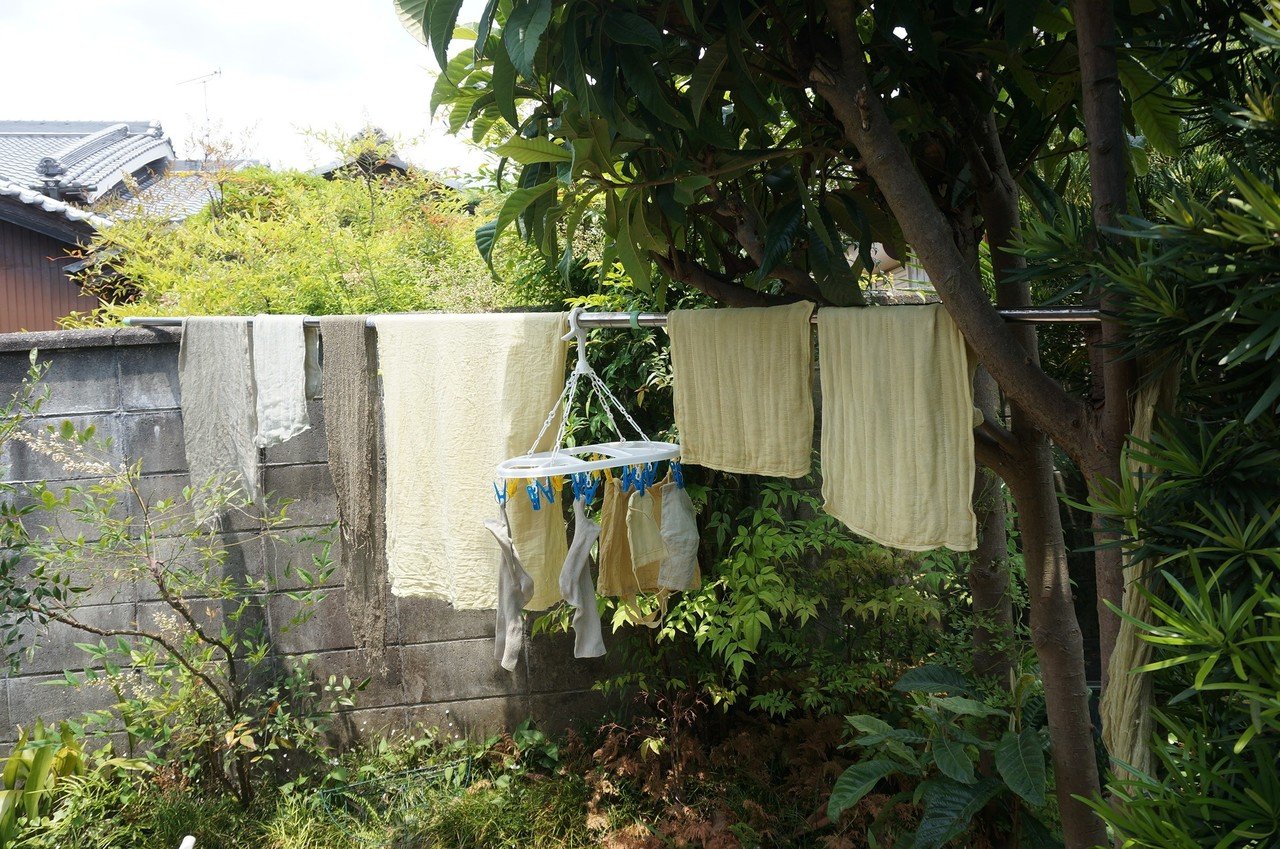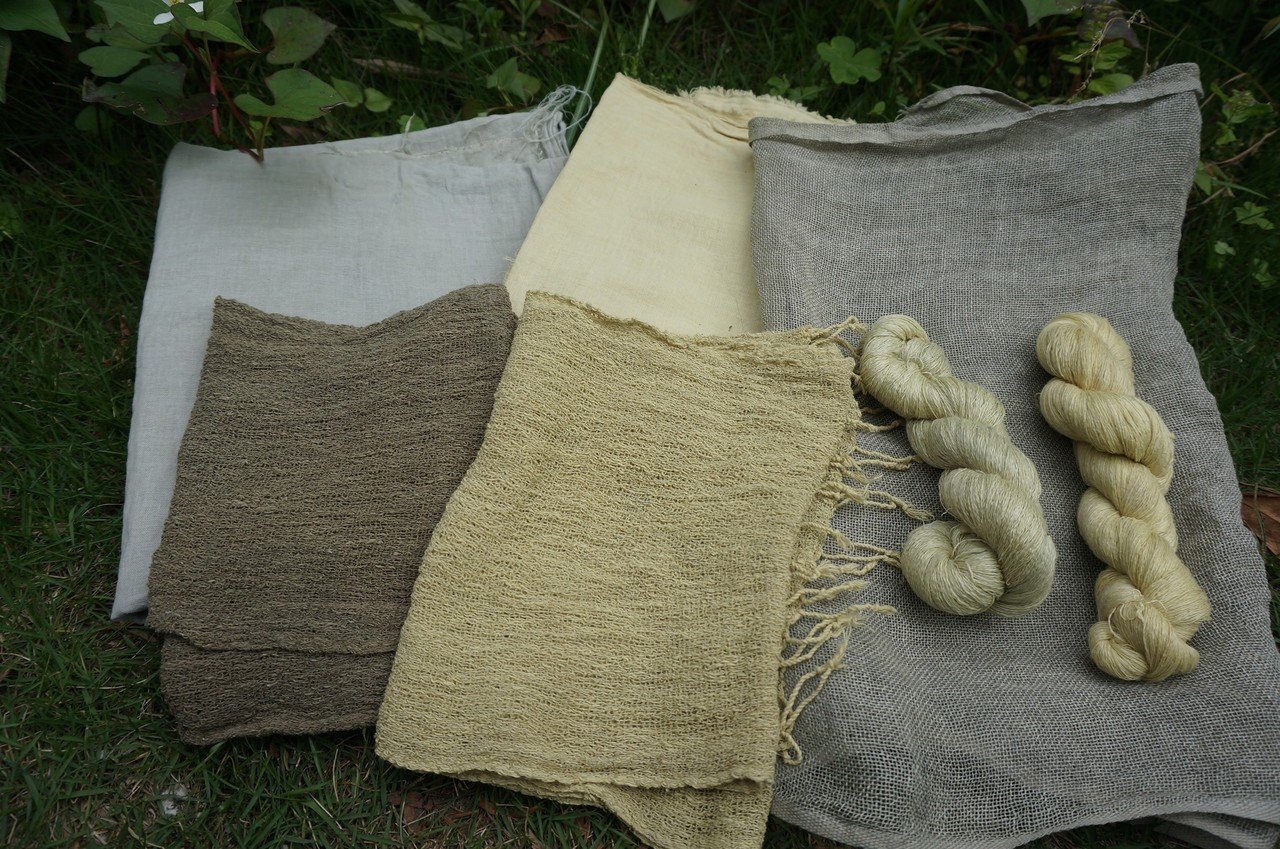Saturday, 27 June 2020
Natural plant dye with traditional cooking pot
Today, I learned how to dye with Ruri-san, who taught me how to dye in Southeast Asia.
Ruri Kitadai's blog "Travel and Colors" (Japanese only)
http://rurilapis.blogspot.com/
Collecting plants while listening to stories about how to make mordant liquid and the wisdom of textiles and plants from Asian countries.
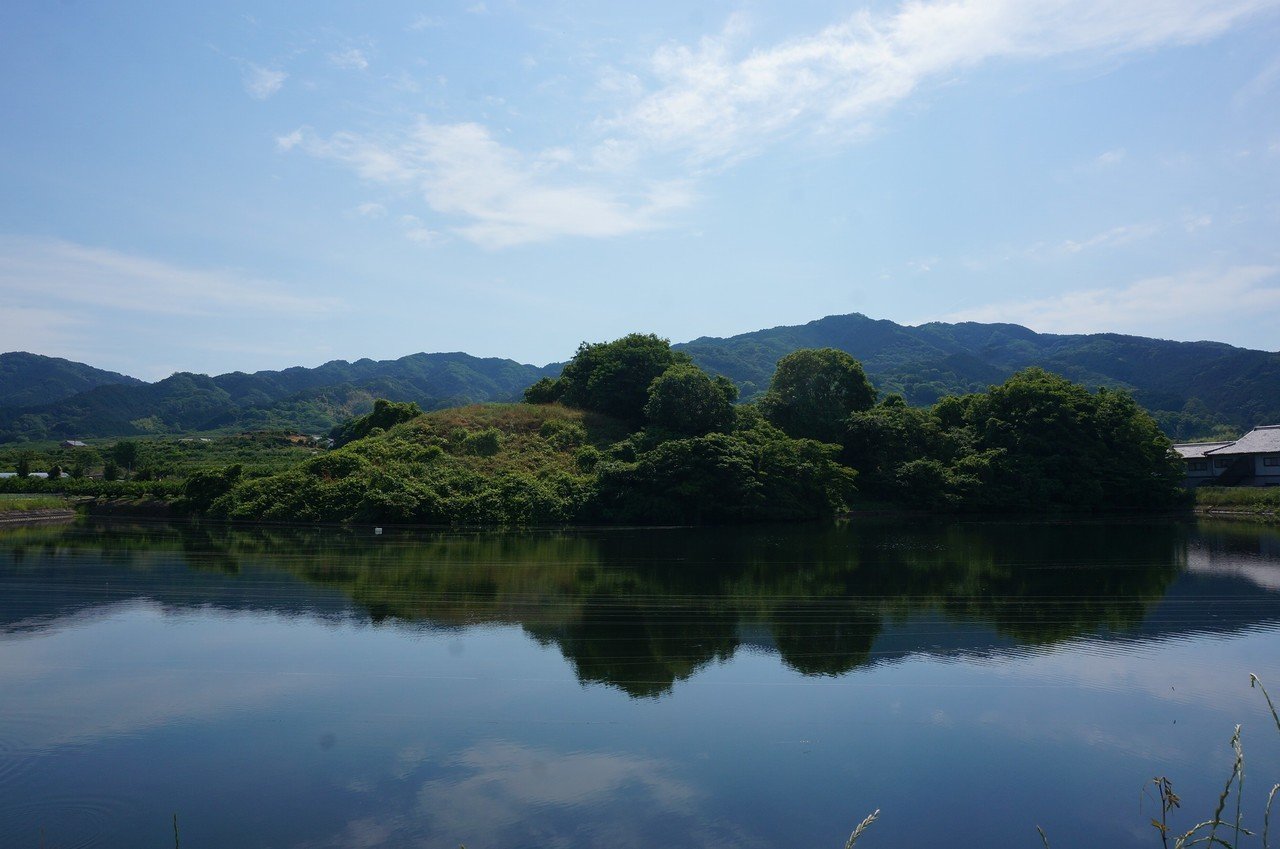
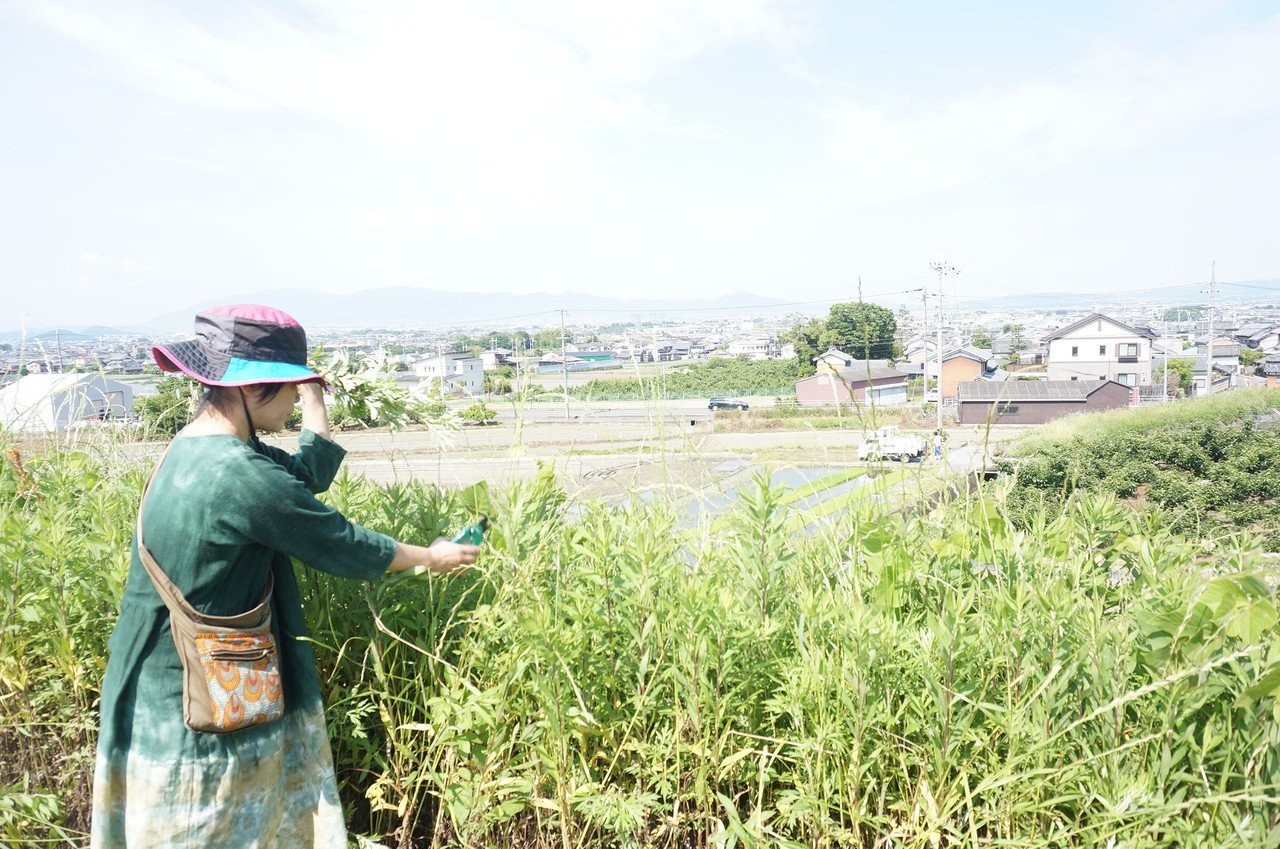
まずは羽窯で染液づくり。よもぎをぐつぐつ煮出していきます。
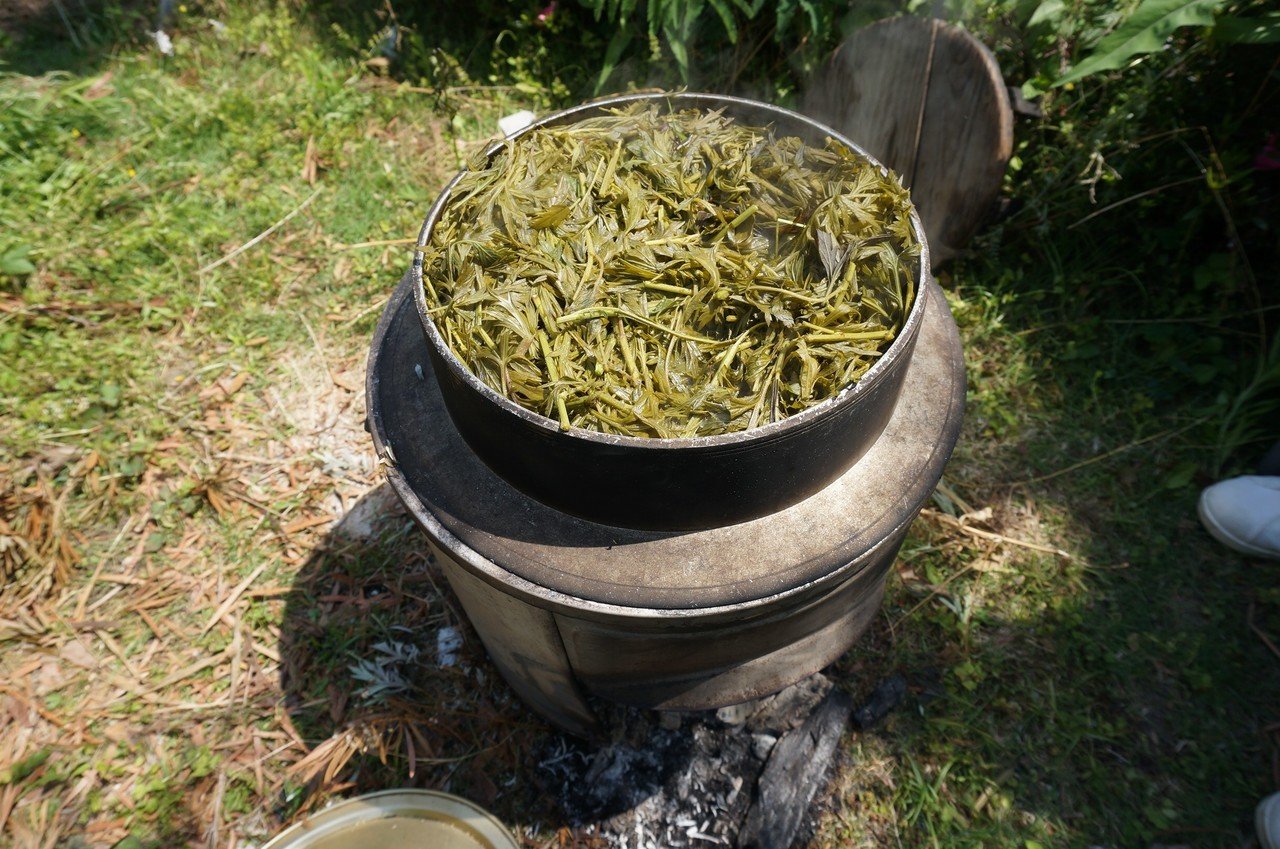
鉄媒染は、酢と鉄釘を混ぜたものでオリーブ色に。ミョウバン媒染は黄色になります。
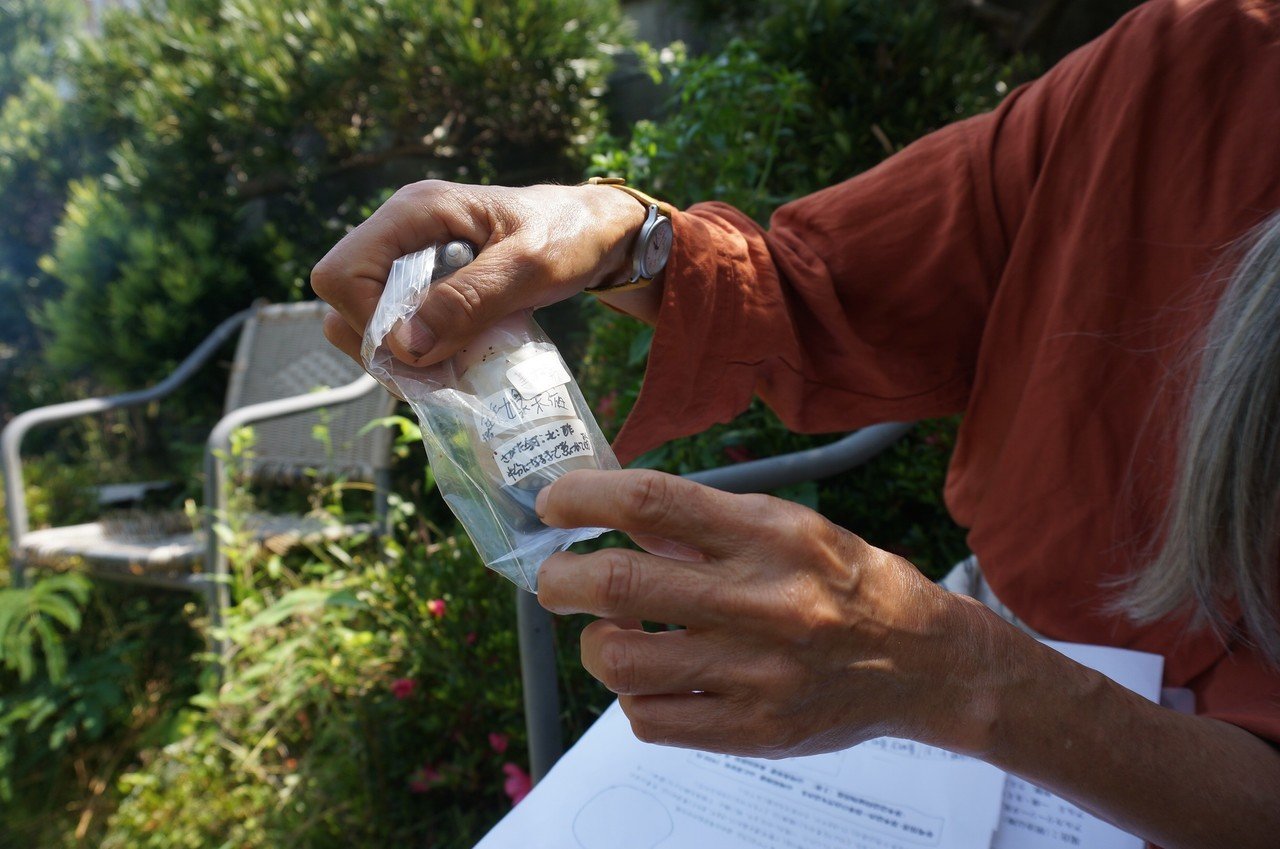
Strain the mugwort through a colander and place the cloth in the dye solution; simmer for 20 minutes. As soon as it boils, the water overflows, so it is difficult to maintain the heat at low heat. I need to change the charcoal material at the beginning, middle and end of the cooking as same as the Okudosan cooking. The same as stewing, you have to turn off the heat and let it soak until it cools down so that it will gradually soak through.
(Silk can be dyed as it is because of its animal protein, but hemp and cotton have been pre-treated with Kureju (Japanese soup). There are many different ways to prepare the groundwork for dyeing in different countries, so it is interesting to think about dyeing folklore. (It's interesting to think about dyeing folklore because there are many different ways to prepare the groundwork in different countries.
Translated with www.DeepL.com/Translator (free version)
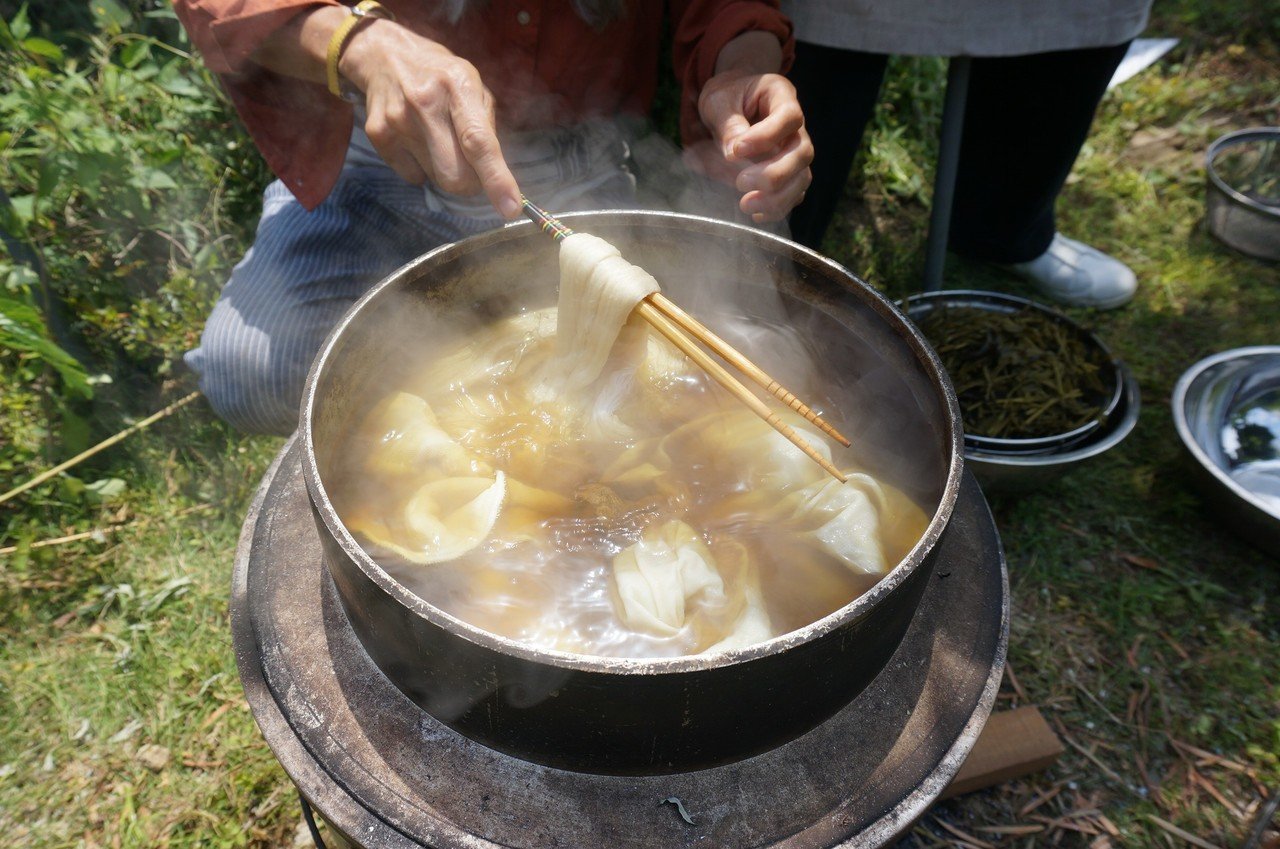
Abeno-mask looks nice when it is dyed
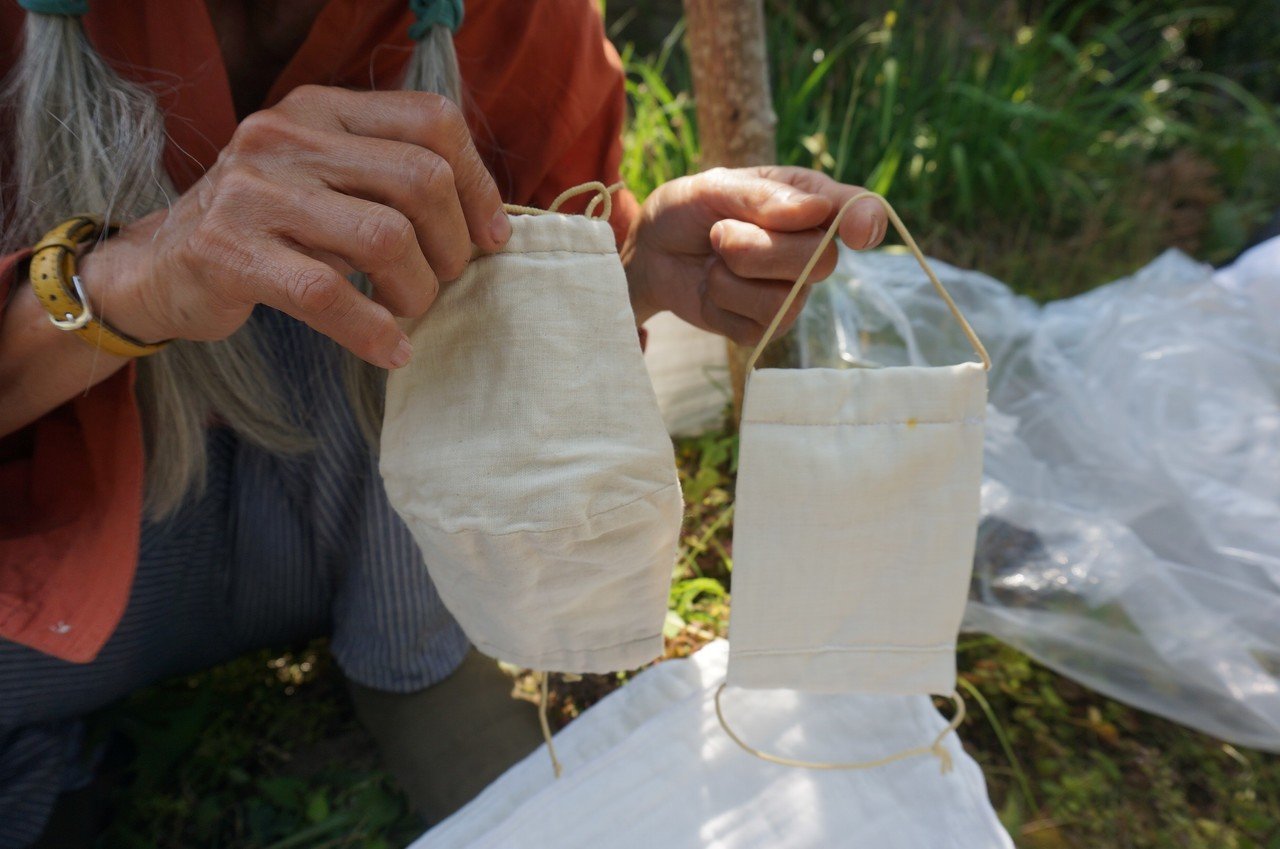
Abenomask is disassembled
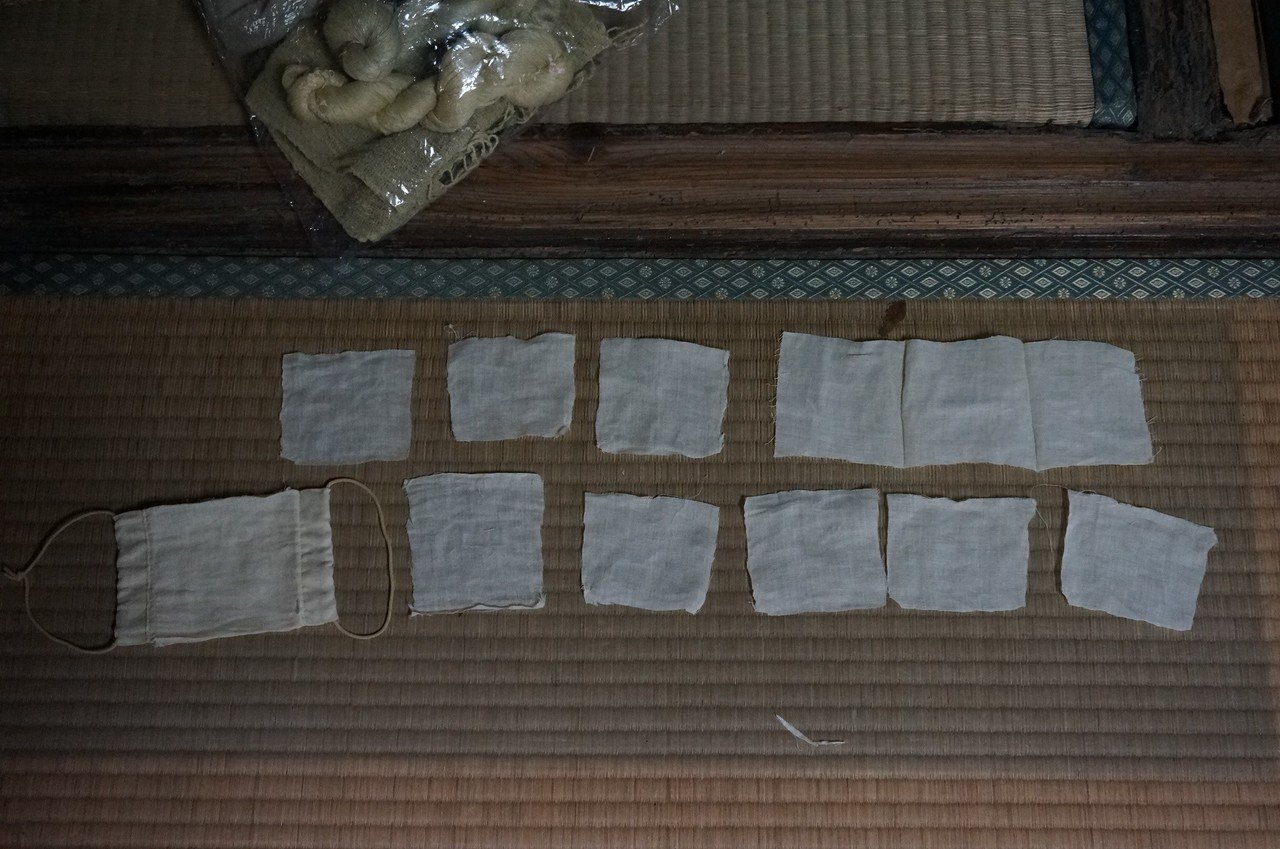
I made galette with buckwheat flour for lunch. This is difficult. If it's not spread thin, it's just a crepe. Topped with sesame seeds from the garden, arugula, parsley and sprinkles.
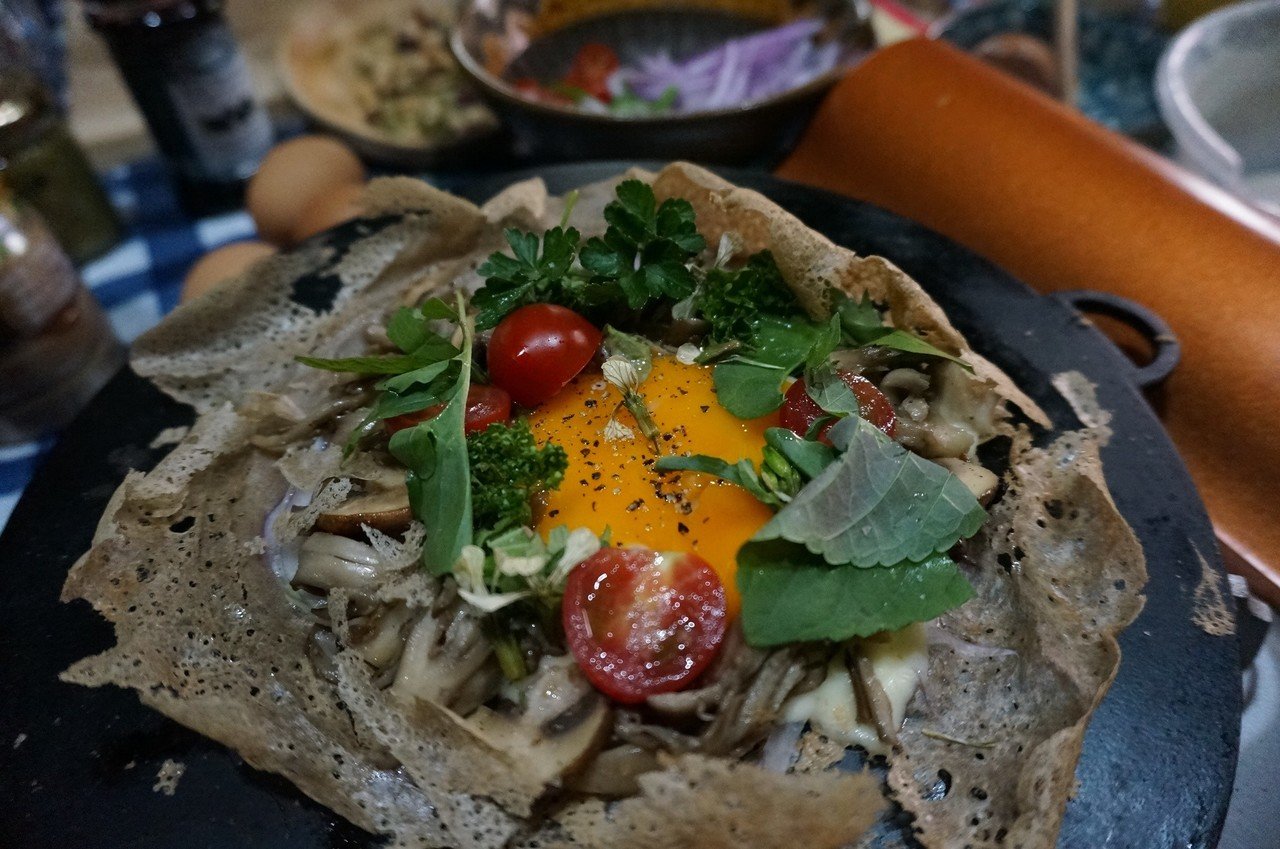
同じ染料でも、媒染液や布の材質によって様々な色に染め上がりました。
